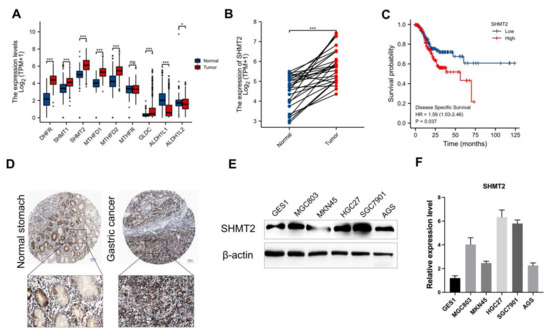Stomach cancer typically has no distinctive colour visible to the naked eye. Symptoms may include internal bleeding that can lead to black or tarry stools.
Stomach cancer, also known as gastric cancer, arises from the lining of the stomach and can develop unnoticed for years. Early symptoms are often vague, making diagnosis challenging. Weight loss, poor appetite, and abdominal discomfort are common signs. As the disease progresses, it may cause more specific issues, such as blood in the stool, indicating potential internal bleeding, which could manifest as darker stool.
Regular screening and prompt attention to unusual stomach issues are critical. For those seeking information on stomach cancer, understanding the symptoms and consulting with healthcare professionals is essential for early detection and effective management. Open discussions about gastric health issues and awareness campaigns are vital in increasing attention toward this virulent disease.

Credit: www.mdpi.com
Causes And Risk Factors
Understanding why stomach cancer develops is critical to prevention. The colour associated with stomach cancer awareness is periwinkle blue. This section explains some causes and risk factors. Knowing these can help people make informed health choices.
Pylori Infection
H. pylori, a common stomach bacterium, increases cancer risk. Often, people catch it in childhood. It can cause ulcers and inflammation. Over time, these might turn into cancer.
Diet And Lifestyle
- Eating lots of salted, smoked, or pickled foods raises stomach cancer risks.
- Low fruit and vegetable intake may also increase the danger.
- Smoking is another significant factor, especially harmful to the stomach.
- Obesity can lead to various cancers, including that of the stomach.
Symptoms And Diagnosis
Exploring the symptoms and getting a timely diagnosis can save lives. Stomach cancer, also known as gastric cancer, often goes unnoticed because early symptoms are subtle. Understanding these can lead to earlier discovery and treatment, improving the prognosis for those affected.
Early Warning Signs
Identifying early warning signs is crucial. The body sends signals that something might be wrong. Look out for:
- Unexplained weight loss: Sudden loss of weight without trying.
- Persistent indigestion: Continuous discomfort after eating.
- Stomach pain: Pain or discomfort in the abdominal area.
- Feeling full: Especially after eating only a tiny amount.
- Nausea and vomiting: Frequent occurrence could be a sign.
Diagnostic Procedures
After noticing symptoms, the next step is diagnosis. Doctors use several methods:
- Physical Exam: Check for swelling or pain in the stomach.
- Blood Tests: Look for anaemia or other clues to stomach health.
- Upper Endoscopy: A tiny camera looks inside the stomach.
- Biopsy: A small piece of stomach tissue is taken to study.
- Imaging Tests: CT scans and X-rays show details inside your body.
Doctors may suggest one or more tests based on the symptoms. A combination of methods provides a clearer picture of the disease. Cooperation and patience are critical throughout the diagnostic process.
Treatment Options
Exploring stomach cancer treatment options is vital for patients and their loved ones. A variety of therapies attack the cancer cells. Each patient receives a tailored treatment plan. This plan depends on the cancer’s stage, location, and the patient’s health. Treatments can range from surgery to therapies using chemicals or rays. Below, learn more about the different treatment strategies.
Surgery
Surgery is often the first step in treating stomach cancer. This procedure aims to remove the cancerous growth. In the early stages, eliminating part of the stomach may suffice. For more advanced cancer, removing the entire stomach might be necessary. Here are standard surgical options:
- Endoscopic resection: Removes early-stage tumours from the stomach lining.
- Subtotal gastrectomy: Eliminates part of the stomach affected by cancer.
- Total gastrectomy: Takes out the whole stomach if cancer has spread extensively.
A team of surgeons and specialists will determine the best surgical option. They will consider the tumour size, location, and overall patient health.
Chemotherapy And Radiation
Chemotherapy uses drugs to kill cancer cells. It often complements surgery. This treatment can shrink tumours before surgery or eliminate remaining cancer cells afterwards. Chemotherapy drugs can be taken orally or injected into a vein.
Radiation uses high-energy rays to destroy cancer cells. Doctors may use it before surgery to shrink tumours. They can also use it after surgery to target any left cancer cells. At times, doctors combine chemotherapy and radiation. This combination is known as chemoradiation.
Patients may experience side effects. These side effects include fatigue, nausea, and hair loss. The medical team will provide care to manage these symptoms.
Treatment Type Purpose Common Side Effects
Chemotherapy Shrink or kill cancer cells Fatigue, nausea, hair loss
Radiation Therapy Destroy cancer cells Skin changes, tiredness
Choosing the proper treatment can be a lifeline for stomach cancer patients. Doctors tailor treatments for the best outcome. They use surgery, drugs, rays, or a mix of these methods. Support from medical teams ensures patients tackle their journey with the best care.

Credit: www.newyorker.com
Prevention And Awareness
Stomach cancer, a severe health concern, needs attention for its prevention and awareness. Knowing the right lifestyle choices and early detection methods could save lives. This section will dive into some practical ways to lower the risk and raise awareness about stomach cancer.
Healthy Habits
Maintaining a healthy lifestyle can significantly reduce the risk of developing stomach cancer. Here are vital habits to adopt:
- Eat plenty of fruits and vegetables: A colourful variety offers essential vitamins and antioxidants.
- Limited intake of salty and smoked foods: These can increase stomach cancer risk.
- Avoid tobacco and reduce alcohol use: Both are known to contribute to stomach cancer.
Exercise regularly to maintain a healthy weight and improve overall health.
Regular Screenings
Early detection is crucial for successful treatment. Screening recommendations include:
Age Group Screening Type Frequency
50+ Upper endoscopy Every 3-5 years
At-risk individuals Helicobacter pylori testing As advised by a doctor
Discuss individual risk factors with a healthcare provider to tailor a screening plan.

Credit: www.hollywoodreporter.com
Frequently Asked Questions For Stomach Cancer Color
What Color Represents Stomach Cancer Awareness?
Periwinkle is the Color representing stomach cancer awareness. Wearing periwinkle ribbons and merchandise helps raise awareness and support for those affected.
Can Stomach Cancer Affect Stool Color?
Yes, stomach cancer can affect stool colour, causing it to become black or tarry. This is due to bleeding in the stomach, known as melena, and warrants immediate medical attention.
How Does Stomach Cancer Diagnosis Affect Diet?
Stomach cancer diagnosis often leads to dietary changes. Patients may need to eat smaller, more frequent meals and avoid certain foods that worsen symptoms or discomfort.
What Are the Early Symptoms Of Stomach Cancer?
Early symptoms of stomach cancer include persistent indigestion, stomach pain, difficulty swallowing, and unintentional weight loss. They require medical evaluation if they persist or worsen.
Conclusion
Understanding the signs associated with stomach cancer is crucial. This knowledge empowers you to seek timely medical attention, increasing treatment success. Remain vigilant for any suspicious symptoms and consult your doctor promptly. Remember, early detection could be your strongest ally in the fight against stomach cancer.
Stay informed, stay healthy.


I am regular reader, how are you everybody?
This piece of writing posted at this website is really nice.
APPEREACIATE! Thanks a lot dear.
It is appropriate time to make some plans for the future and it’s time to be happy.
I’ve read this submit and if I could I wish to recommend you few attention-grabbing issues or tips.
Perhaps you could write subsequent articles referring to
this article. I want to read even more issues about it!